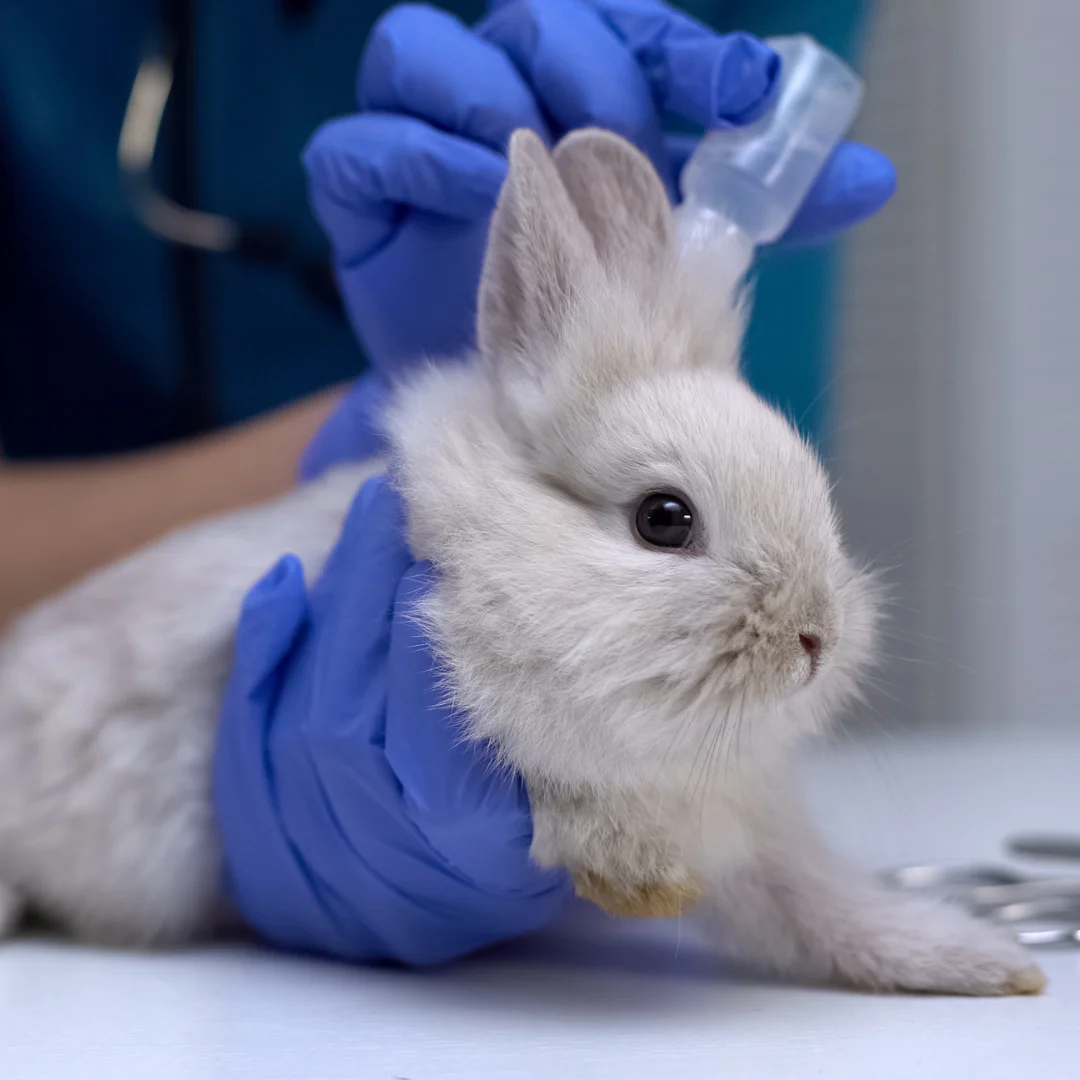Table of Contents
Introduction
Let’s face it: our bunnies are our little bundles of fluff and joy 🐰. But what happens when that adorable head tilt becomes a constant ear-scratching frenzy? If your bunny seems to be going crazy with the ear scritches, it could be stressed, but there’s a chance they might have ear mites. These tiny terrors can be a real pain for our furry friends, but don’t worry; we can get through this together!
This post is your one-stop shop for all things ear mites in rabbits 🐇. We’ll delve into what these little critters are, how to spot the signs they’re bugging your bunny, and most importantly, how to get rid of them so your fluffy friend can return to being happy and itch-free!
What are Ear Mites in Rabbits? Tiny Terrorizers!
Ear mites, also known as rabbit ear mites or Psoroptes cuniculi, are tiny parasitic mites that live inside a rabbit’s ears. They feed on the wax and debris in the ear canal, causing irritation and inflammation. While they aren’t life-threatening, ear mites can definitely make your bunny miserable.
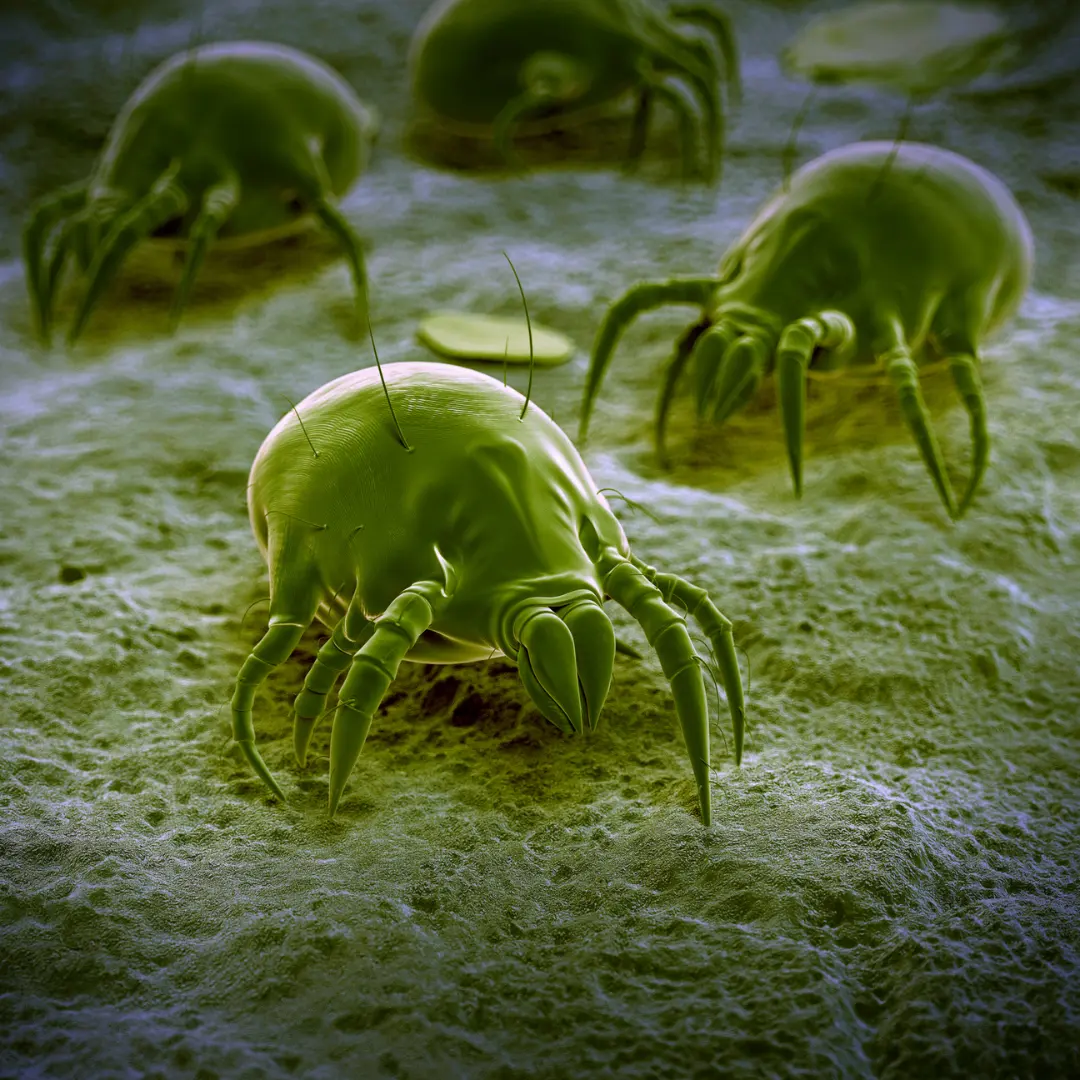
These mites are incredibly contagious and can quickly spread between rabbits through direct contact. So, if you have multiple bunnies, it’s essential to treat them all at the same time to prevent re-infestation.
Are Ear Mites Contagious to Other Pets or Humans?
The good news is that rabbit ear mites (Psoroptes cuniculi) are species-specific. This means they prefer to live on rabbits and cannot survive or reproduce on humans, dogs, cats, or other household pets. So, you don’t have to worry about catching ear mites from your bunny!
However, it’s important to remember that ear mites are highly contagious between rabbits. If you have multiple bunnies and one contracts ear mites, it’s crucial to treat all of them simultaneously to prevent the infestation from spreading.
Why Are Rabbits Susceptible?
Rabbits naturally have long, floppy ears that can trap moisture and debris. This creates a perfect breeding ground for ear mites. Additionally, rabbits groom themselves frequently, which can accidentally spread the mites from one ear to the other or even to other rabbits.
Another factor that makes rabbits susceptible to ear mites is the anatomy of their ear canals. Unlike some other animals, rabbit ear canals have folds and bends. These folds can trap moisture, debris, and, yes, even ear mites! This trapped environment provides a safe haven for the mites to thrive, making it more difficult for the rabbit’s natural defenses to eliminate them.
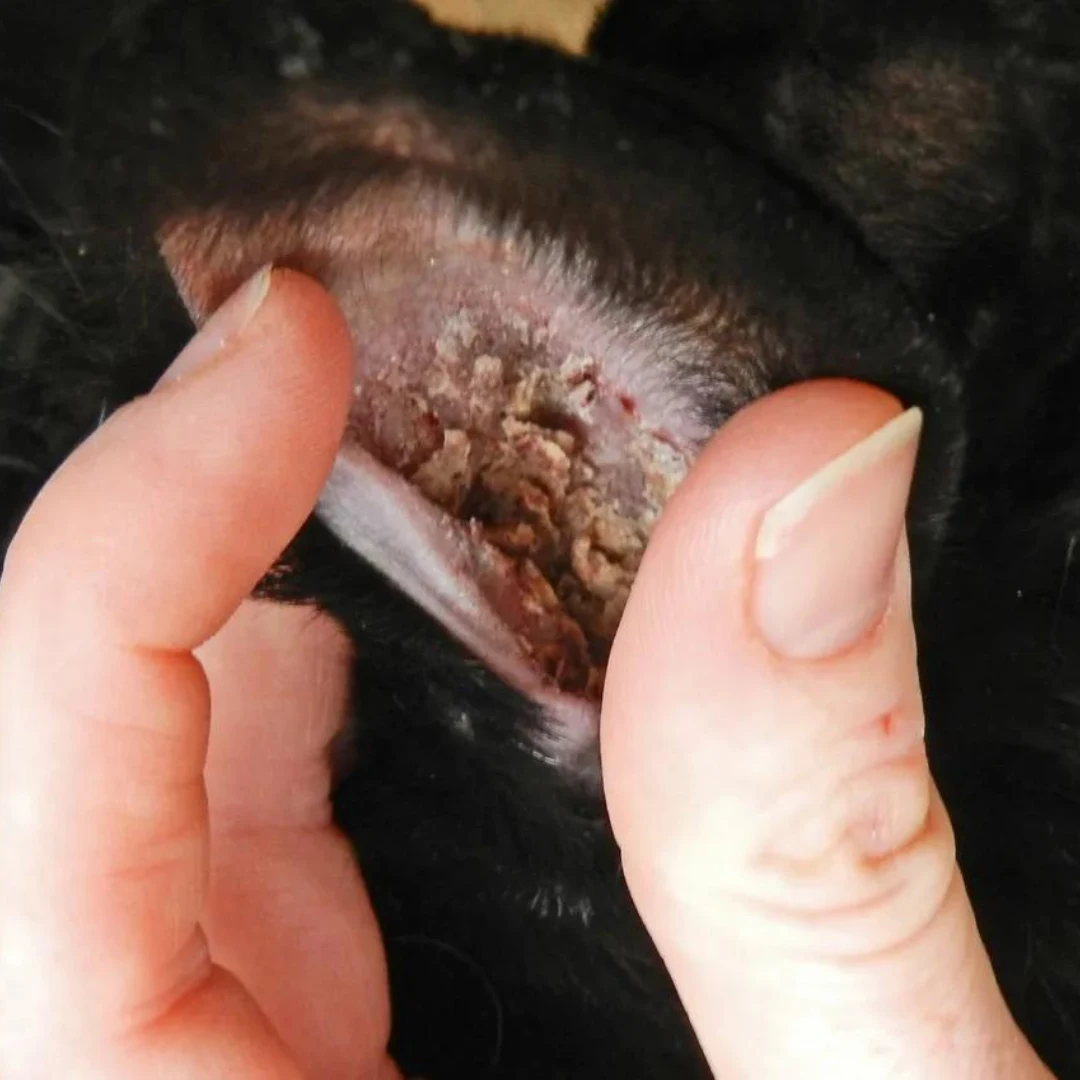
All Breeds Susceptible, But Some More Prone
While all rabbit breeds can contract ear mites, some breeds may be more prone due to specific ear anatomy or grooming habits. For instance, lop-eared breeds like French Lops and English Lops have particularly long, floppy ears that can trap more moisture and debris, potentially increasing their risk.
However, it’s important to remember that no breed is completely immune to ear mites. The best course of action is to be vigilant about monitoring your rabbit’s health, regardless of breed, and to seek veterinary attention if you suspect an infestation.
Signs and Symptoms: Is Your Bunny Bugged?
Now that we know what ear mites are and why rabbits are susceptible, let’s talk about how to spot the signs of an infestation. Here are some key things to watch out for:
- Head shaking and ear scratching: This is the most common sign of ear mites. You might notice your bunny shaking their head constantly or scratching their ears furiously. In my experience, the scratching can get quite intense, sometimes to the point where the bunny seems to be losing balance.
- Visible crusting or discharge: Ear mites can cause a buildup of crusty discharge in the ear canal. This discharge can be brown, yellow, or black, and it often has a foul odor.
- Loss of balance or tilting of the head: In severe cases of ear mite infestation, the inflammation can affect your rabbit’s balance. You might notice them tilting their head to one side or having difficulty hopping around. If you see this, it’s important to take your bunny to the vet right away!
- Redness, swelling, or irritation: The constant scratching and irritation caused by ear mites can lead to redness, swelling, and even sores around the ears.
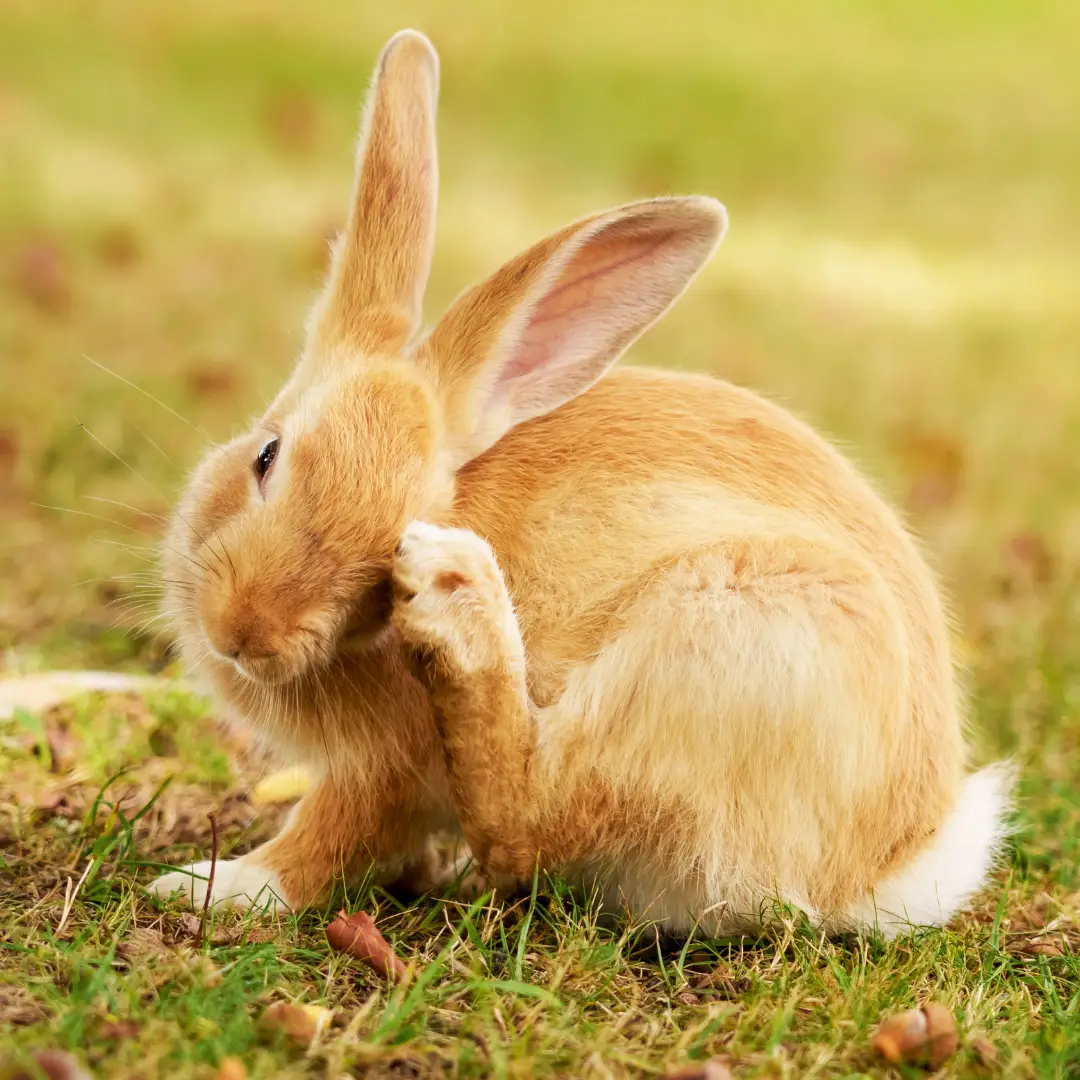
Diagnosis and Treatment: Saying Goodbye to the Itch
If you suspect your bunny has ear mites, the best course of action is to schedule a visit with your veterinarian. Ear mites can mimic other ear conditions, so a vet can properly diagnose the problem and recommend the best course of treatment.
Here are some common treatment options for ear mites in rabbits:
- Medications: Vets typically prescribe topical medications, like drops or ointments, that are applied directly to the ear canal to kill the mites. In my case, when my bunny had ear mites, the vet prescribed a medicated ear drop that I had to apply for a week. It was a bit tricky holding still a bunny who didn’t appreciate ear drops, but with patience and a towel for wrapping, we managed just fine!
- Cleaning solutions: Along with medication, your vet might recommend cleaning your bunny’s ears with a gentle cleaning solution. This will help to remove any crusty discharge and debris that the mites are feeding on.
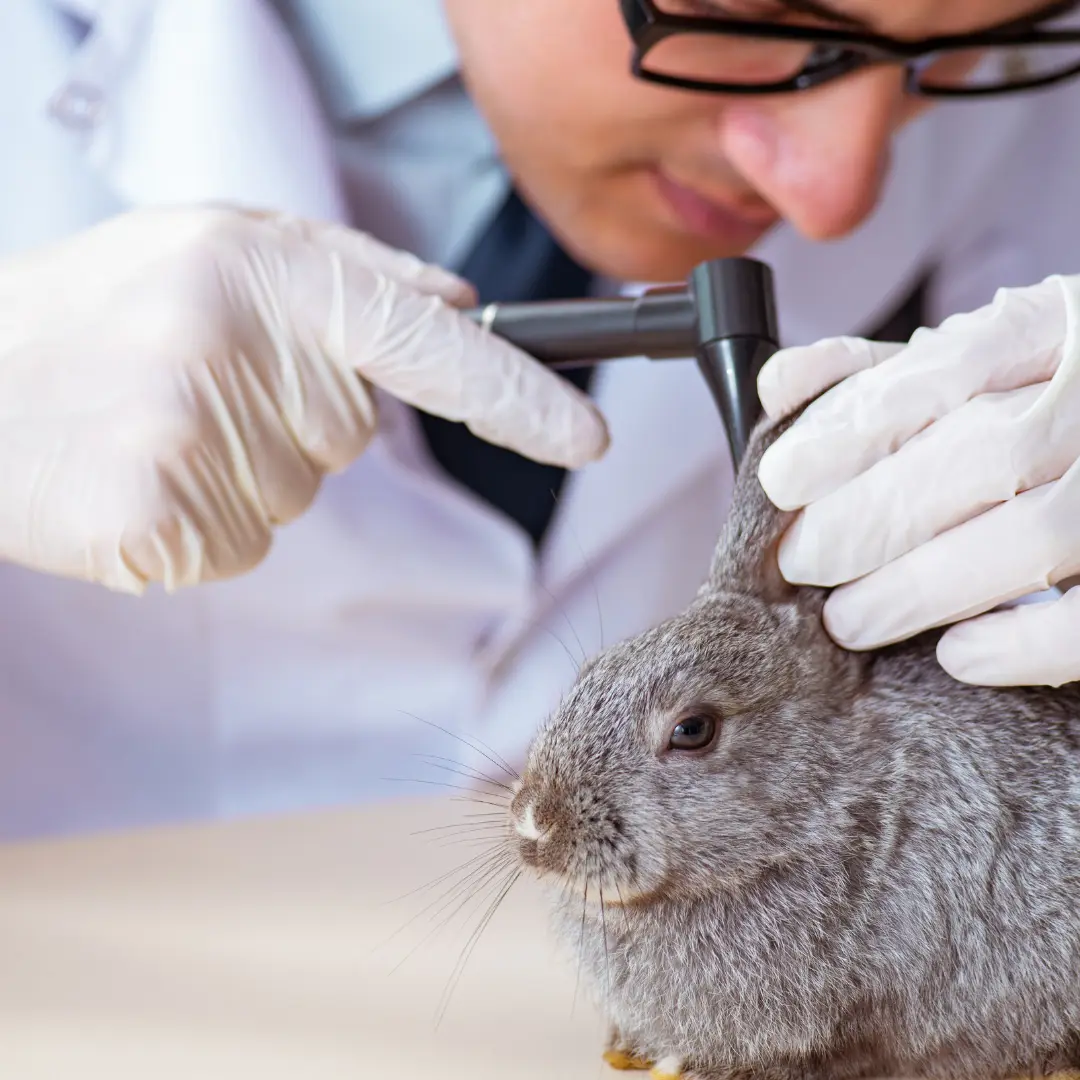
Home Care Tips for Ear Mite Prevention
While ear mites are treatable, prevention is always better than cure. Here are some tips to help keep your bunny ear mite-free:
- Regular cleaning: Regularly clean your bunny’s enclosure to remove any potential breeding grounds for mites. This includes their bedding, hay feeder, and litter box.
- Spot cleaning: You can also spot-clean your bunny’s ears with a cotton swab dipped in a gentle ear-cleaning solution recommended by your vet. Do not use cotton swabs deep in the ear canal, as this can damage the delicate ear drum.
- Quarantine new rabbits: If you’re introducing a new rabbit to your household, quarantine it for a few weeks before letting it interact with your other bunnies. This will help prevent the spread of potential parasites.
- Regular vet checkups: Schedule regular checkups with your vet for your bunny. This will allow your vet to identify any potential problems early on, including ear mites.
Conclusion: A Happy, Itch-Free Bunny!
Ear mites might be a nuisance, but with proper treatment and prevention strategies, you can keep your bunny healthy and itch-free. Remember, early detection and treatment are key. If you notice any signs of ear mites in your bunny, don’t hesitate to schedule a visit with your vet.
By following the tips in this post, you can ensure your bunny has happy, healthy ears and can get back to enjoying all the binkies and zoomies a bunny life has to offer!

